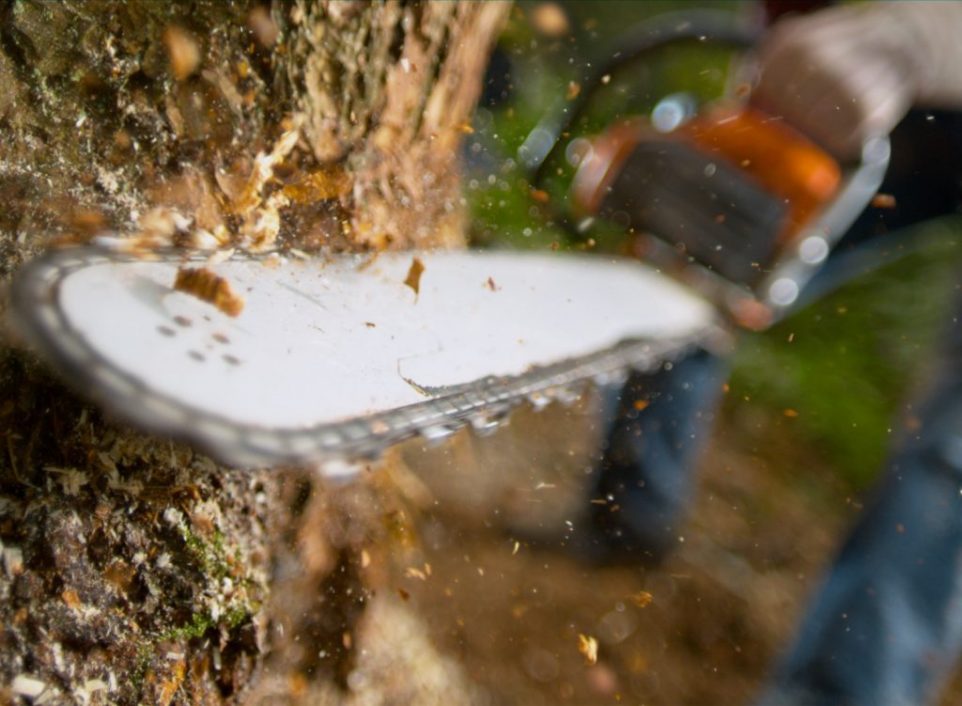Tree Cutting Machine vs. Chainsaw: Which One Is Better?

When taming nature’s towering giants, you stand at a crossroads, facing a critical decision. The age-old chainsaw, a symbol of rugged simplicity and versatility, competes against the modern marvel of tree-cutting machines engineered for precision and efficiency. Both are stalwarts in tree management, but which one is better suited for your needs? In this exploration of tree-cutting tools, we aim to illuminate the path to the right choice.
Chainsaws have been a faithful companion to arborists and homeowners for generations, offering portability, affordability, and many applications. Yet, they have limitations, particularly in the face of colossal trees and complex cutting conditions. On the other hand, tree-cutting machines, often reserved for large-scale operations, usher in a new era of efficiency and safety, but at a cost that might be prohibitive for many. As we delve deeper into this comparison, we’ll help you navigate the factors that will guide you toward the tool that best aligns with your tree-cutting aspirations.
Chainsaws: A Time-Tested Classic
Chainsaws have been a trusted tool for tree cutting for many decades, and for good reason. They are versatile, easy to use, and come in various sizes to suit different tasks. Here are some of the benefits of using a chainsaw:
- Portability: Chainsaws are relatively lightweight and portable. You can carry them to different parts of your property without much hassle, making them suitable for small-scale tree cutting and pruning.
- Affordability: Chainsaws are generally more affordable than tree-cutting machines. They offer an economical way to tackle occasional tree maintenance or smaller-scale projects.
- Ease of maintenance: Chainsaws are simple to maintain and repair. Routine tasks like sharpening the chain and cleaning are manageable for the average user, reducing long-term costs.
- Versatility: Chainsaws are not limited to tree cutting. People can use them for various tasks, from cutting firewood to general construction work.
However, chainsaws do come with some limitations:
- Safety concerns: Chainsaws can be dangerous, especially for inexperienced users. They require proper training and safety gear to avoid accidents.
- Limited power: A chainsaw may lack the power to handle the job efficiently for larger trees or when facing challenging cutting conditions.
- Manual Labor: Using a chainsaw can be physically demanding, especially for prolonged periods. It might not be the best choice for individuals with limited strength or stamina.
Tree Cutting Machines: Modern Efficiency
Tree-cutting machines, often called tree harvesters or feller bunchers, are equipment units specialized for efficient tree cutting in forestry and land management applications. These machines have several advantages:
- Efficiency: Tree-cutting machines are incredibly efficient and can fell large trees with minimal effort. They are well-suited for commercial or industrial-scale projects.
- Safety features: Most tree-cutting machines have advanced safety features, reducing the risk to operators and bystanders.
- Precision cutting: These machines can make precise cuts and control the direction of tree falls, making them ideal for situations where accuracy is crucial.
- Reduced labor: Tree-cutting machines significantly reduce the manual labor required to fell trees, which can lead to time and cost savings on large-scale projects.
However, tree-cutting machines have their downsides too:
- Cost: Tree-cutting machines are expensive to purchase or rent. This makes them less practical for homeowners or those with small-scale tree-cutting needs.
- Skill requirement: Operating a tree-cutting machine requires specialized training. It’s not something you can pick up and use without prior experience.
- Environmental impact: The heavy machinery used in tree-cutting can have a more substantial impact on the environment compared to chainsaws.
Choosing the Right Tool for Your Needs
To decide between a chainsaw and a tree-cutting machine, you should consider the following factors:
- Scope of work: Are you dealing with a single tree or a large-scale forestry project? The scale of your project is a critical factor in determining the right tool.
- Budget: Chainsaws are more budget-friendly for smaller tasks, while tree-cutting machines are an investment for larger projects.
- Skill level: Do you have the training and experience to operate a tree-cutting machine safely, or are you more comfortable using a chainsaw?
- Safety: Always prioritize safety. Chainsaws may be more suitable for less experienced users who prioritize safety and don’t need the power of a tree-cutting machine.
- Environmental impact: Consider the environmental impact of your choice. Tree-cutting machines may have a more substantial ecological footprint compared to chainsaws.
Conclusion
The choice between a tree-cutting machine and a chainsaw comes down to your specific needs and circumstances. Chainsaws are a trusted and versatile tool for smaller tasks while tree-cutting machines offer efficiency and power for larger projects. Make your decision carefully considering the abovementioned factors, and always prioritize safety in tree-cutting activities.